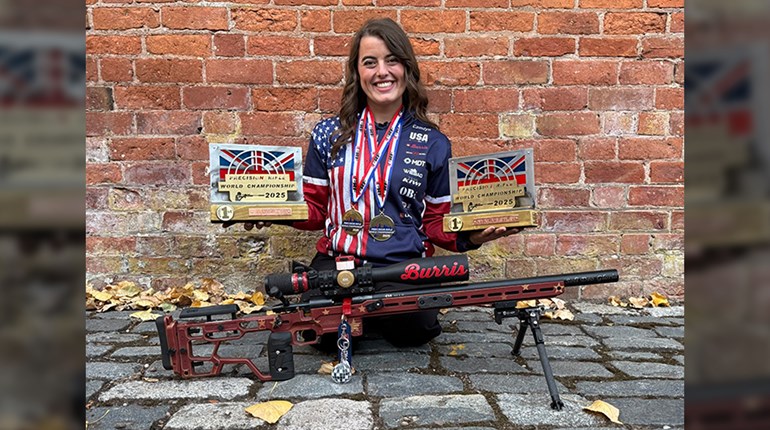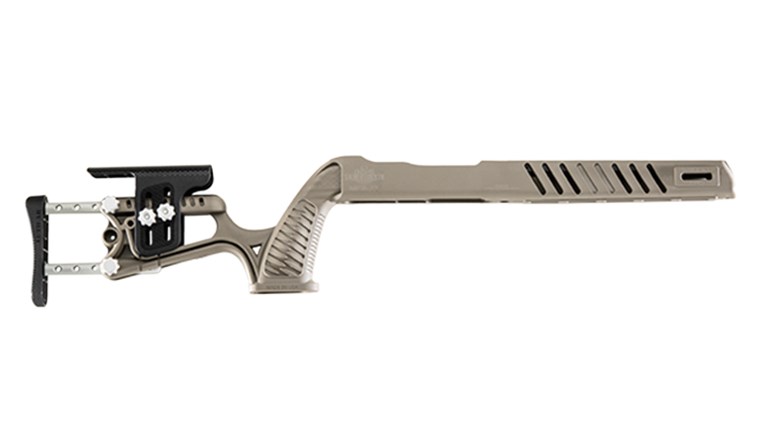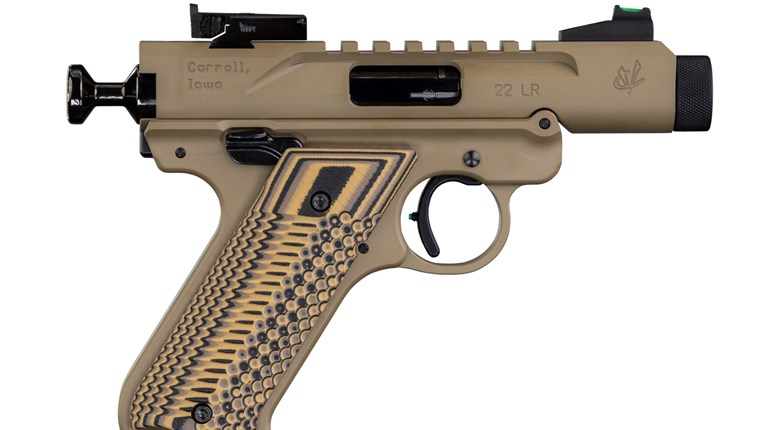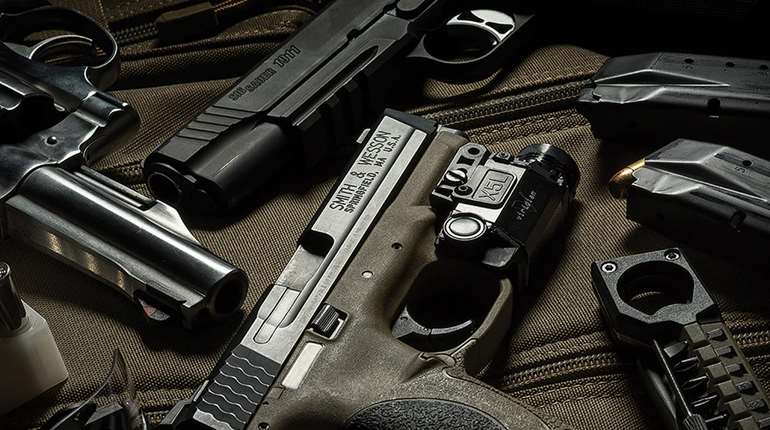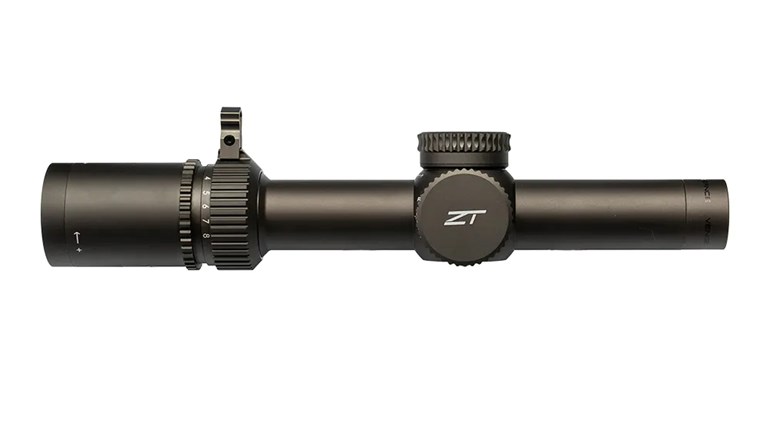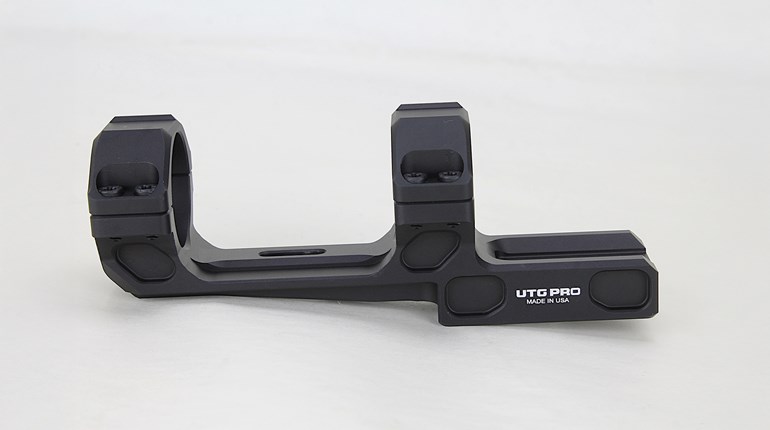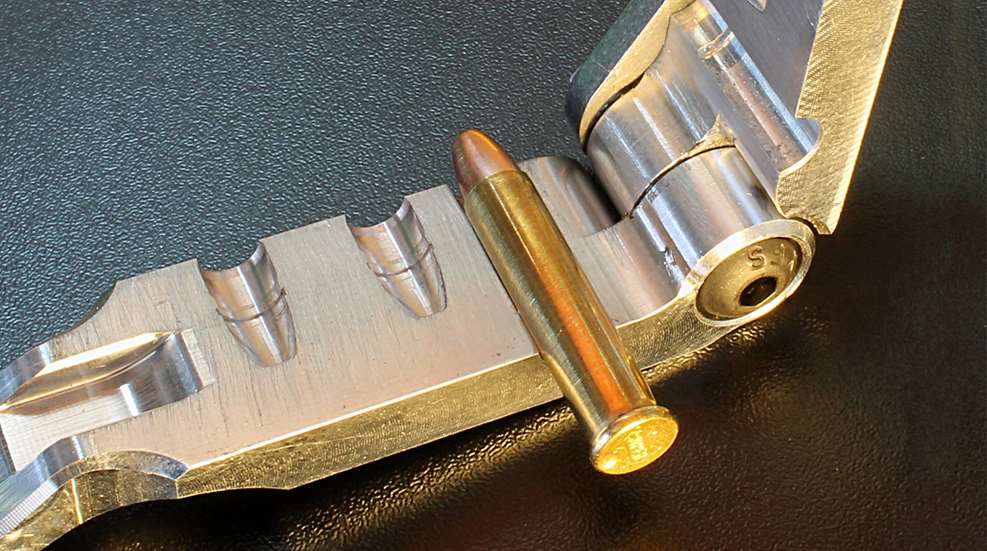
WARNING: All technical data in this publication, especially for handloading, reflect the limited experience of individuals using specific tools, products, equipment and components under specific conditions and circumstances not necessarily reported in the article and over which the National Rifle Association (NRA) has no control. The data has not otherwise been tested or verified by the NRA. The NRA, its agents, officers and employees accept no responsibility for the results obtained by persons using such data and disclaim all liability for any consequential injuries or damages.
There are a few hurdles to face when reloading the rimfire .22 Magnum: a lack of dies, primer material and load data, plus that worrisome little dent left in the case rim by the firing pin. Tackling the last obstacle first, experience shows that the dent is of little consequence―we can ignore it and reloaded cases fire just fine, to a point. Now let’s tackle the rest.
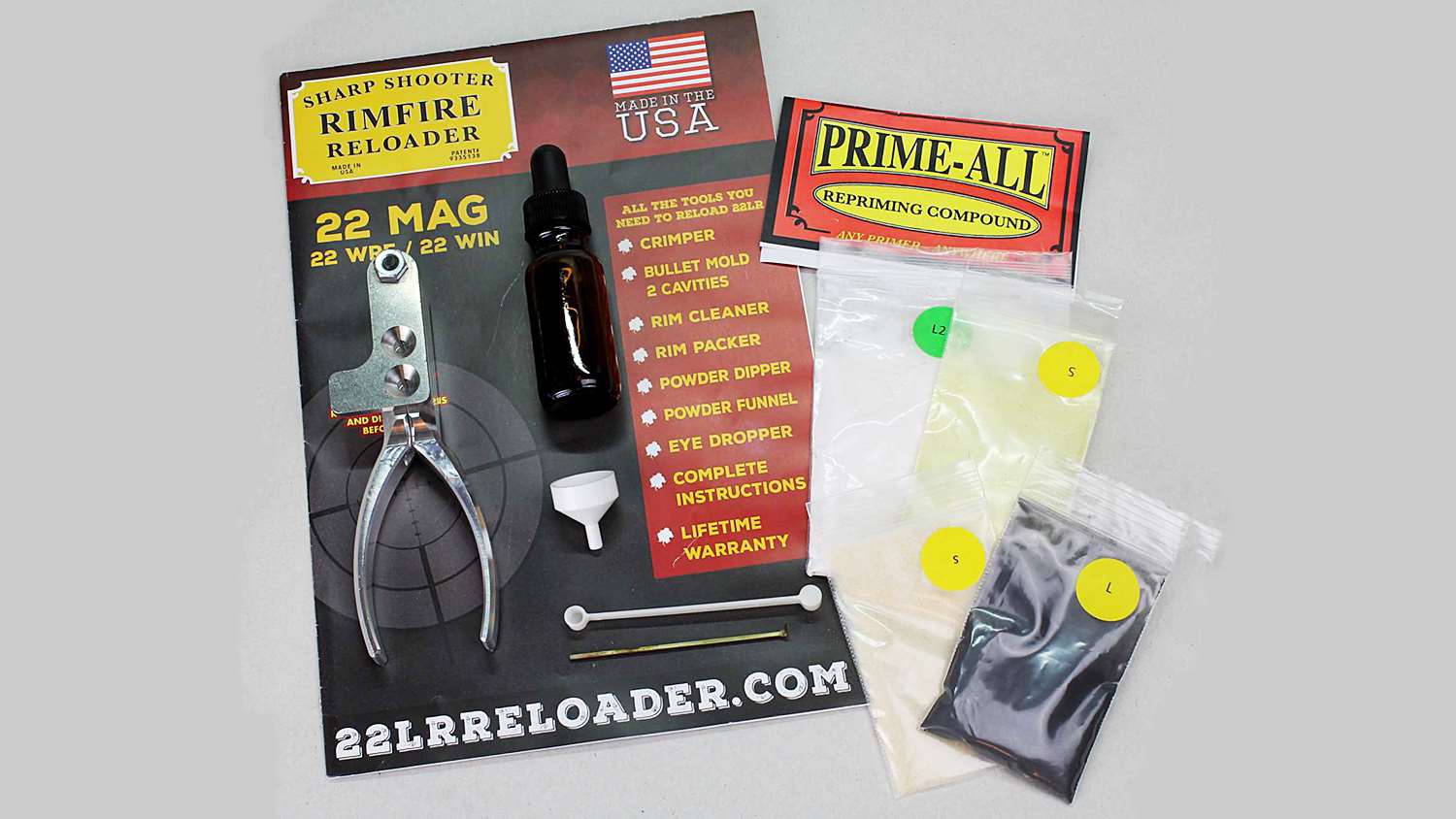
Sharp Shooter, who brought us the 22 Rimfire Reloader for .22 LR, now offers a similar reloading tool kit for the .22 Magnum (.22 WMR). The company also offers a mix-it-yourself, sure-fire priming compound, and because bullets for handloading .22 WMR are commonly available, our last obstacles are gone.
Finding COL
Like Sharp Shooter’s .22 LR reloader, the 22 MAG Rimfire Reloader kit has at its heart a tong tool that serves as bullet mold and bullet crimper. But casting bullets isn’t necessary because the .22 WMR uses the same .224-inch diameter bullets that we load for our 5.56 NATO/.223 Rem. High Power competition rifles. That said, unlike going with the heaviest possible bullets in our match guns, we are limited to using only the lightest .224-inch bullets in the .22 WMR for a couple of reasons.
Twist rates in .22 WMR barrels are typically 1:16 or 1:14, fast enough to stabilize the 30- to 50-grain bullets in factory loadings, but too slow to stabilize heavier bullets. Of course that’s a generalization and your own experiments may discover a happy firearm/heavy bullet combo.
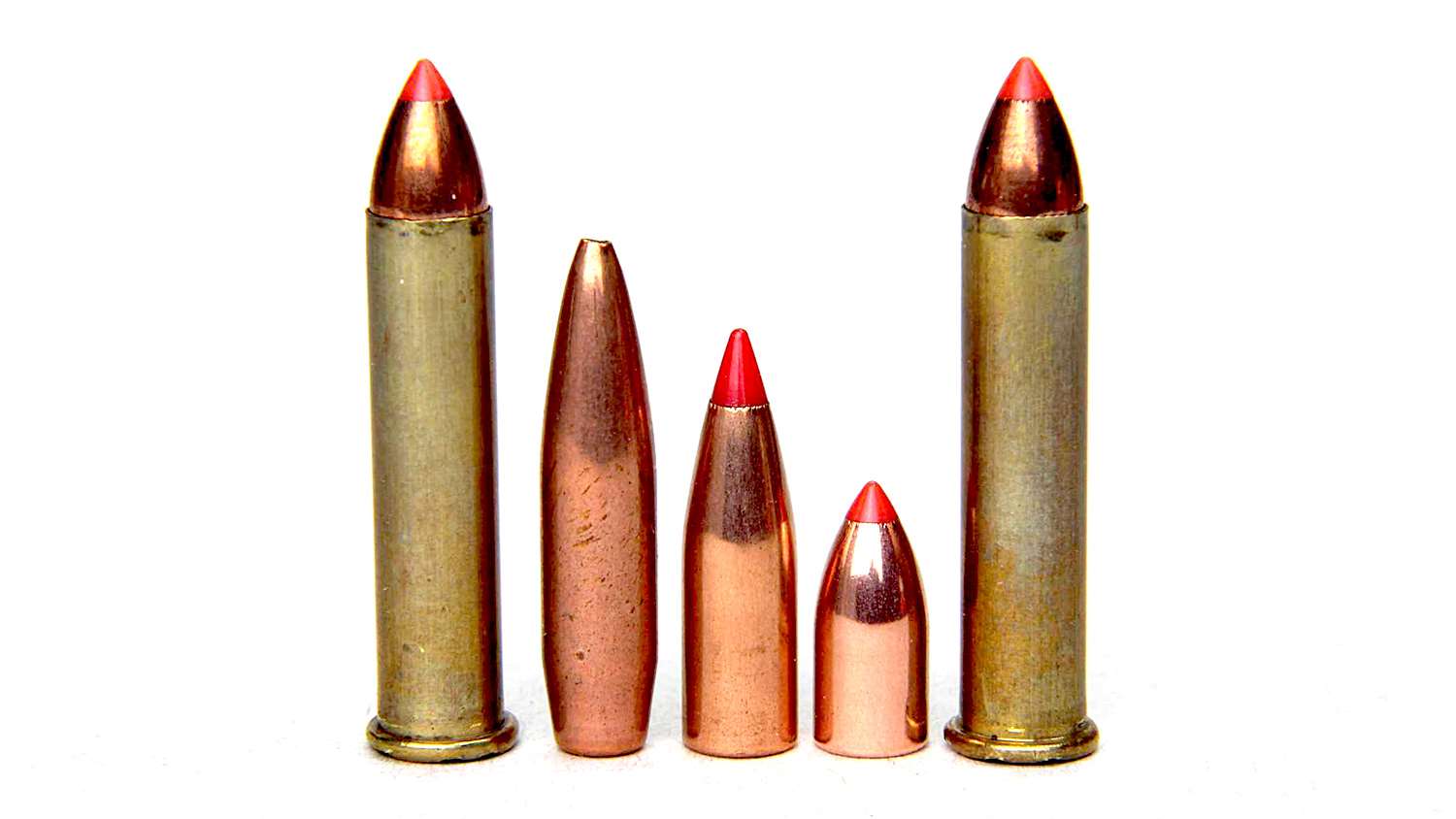
Heavier bullets are longer, typically too long for the .22 WMR. Cartridge overall length (COL) for the .22 WMR is 1.350-inches; bullets heavier than 40 grains (all that that I’ve tried, anyway) have ogives so long that even crimping as high up on the bullet shank as physically possible, COL is still excessive. While a few thousandths extra bullet length protruding from the case may still fit in a rifle chamber, it may not allow revolver cylinders to turn or fit semi-auto magazines. And a too-long COL may cause the bullet to seat firmly into the rifling when chambered; while this can benefit accuracy, it requires caution because it can also raise chamber pressure.
Every cartridge comes with its own caveats, but the basic handloading procedures for all are alike, even for the rimfire .22 WMR. If you already reload, the only steps you’ll find different with the .22 WMR is the priming and the bullet crimping method.
Clean, maybe resize, and prime
To get started, clean fired cases as you normally do. Then, using the kit’s brass tool, scrape all the fired primer residue out from under the case rim. The tool is tiny with squared edges that bite into the fingers after a few cases―wrapping it with tape or better yet, mounting it in a jeweler’s file handle, will make your session much more pleasant.
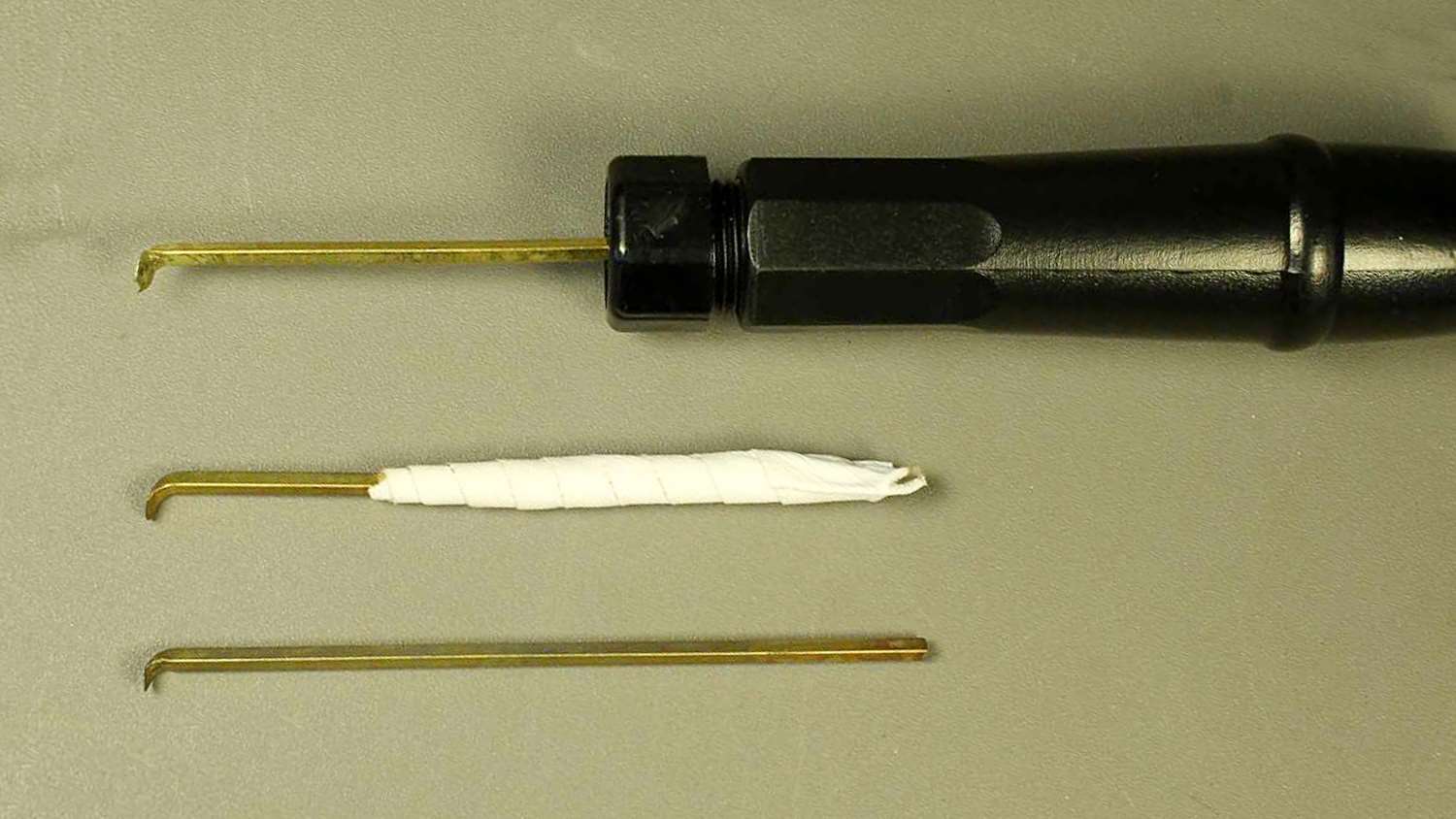
Sharp Shooter offers a .22 WMR resizing die and shellholder that does not come with the kit. If you fire reloaded cases in the same firearm in which you originally fired them, they will likely chamber again after reloading without resizing. That has been my experience shooting and reloading .22 LR and .22 WMR in a bolt-action rifle and revolver. However, seating and crimping bullets is more difficult when not resizing because bullets slip easily into and out of the case mouth that has expanded on firing. Resizing puts some neck tension onto the bullet, making that job easier, especially with the necessary crimping method, which we’ll get to later.
Shipping impact-sensitive loose priming compound is, to understate it, hazardous. Sharp Shooter instead ships its Prime-All as four safely inert powdered chemicals in separate plastic sachets that, when mixed together by the handloader, becomes a percussion sensitive primer compound. Mixing is easy. Use the provided plastic scoop to measure the chemicals and combine them in the proper ratios noted in the instructions.
After mixing, scoop Prime-All into a case utilizing the kit’s tiny funnel. Add a drop of acetone or denatured alcohol to make a primer “mud,” then use the scraping tool’s square end to pack the mud tightly under the case rim cavity. Ensure distribution around the entire rim for reliable ignition. Also very important, allow the primer compound to dry completely, at least two hours or even overnight, before charging cases with powder. If you experience misfires, double check your mixing ratios and priming technique.
Tiny charges
In handloading .22 WMR, we are exploring uncharted waters in working up our own loads, as there is no load data from the usual bullet or powder manufacturers. The limited load data provided with the kit is intended for the 40-grain lead bullets thrown by the kit’s molds. The data’s 1680 fps max velocity is appropriate for cast lead bullets, and about 200 fps below that of factory loaded 40-grain JHPs, which run about 1900 fps.
The kit’s scoops throw charges right at the listings on the instruction’s chart, +/- 0.1 grain as measured with an electronic scale. Scales generally guarantee a +/- 0.1 grain accuracy, so the scoops are precise enough to not require measuring powder charges if you only want to make guns go, “bang.”
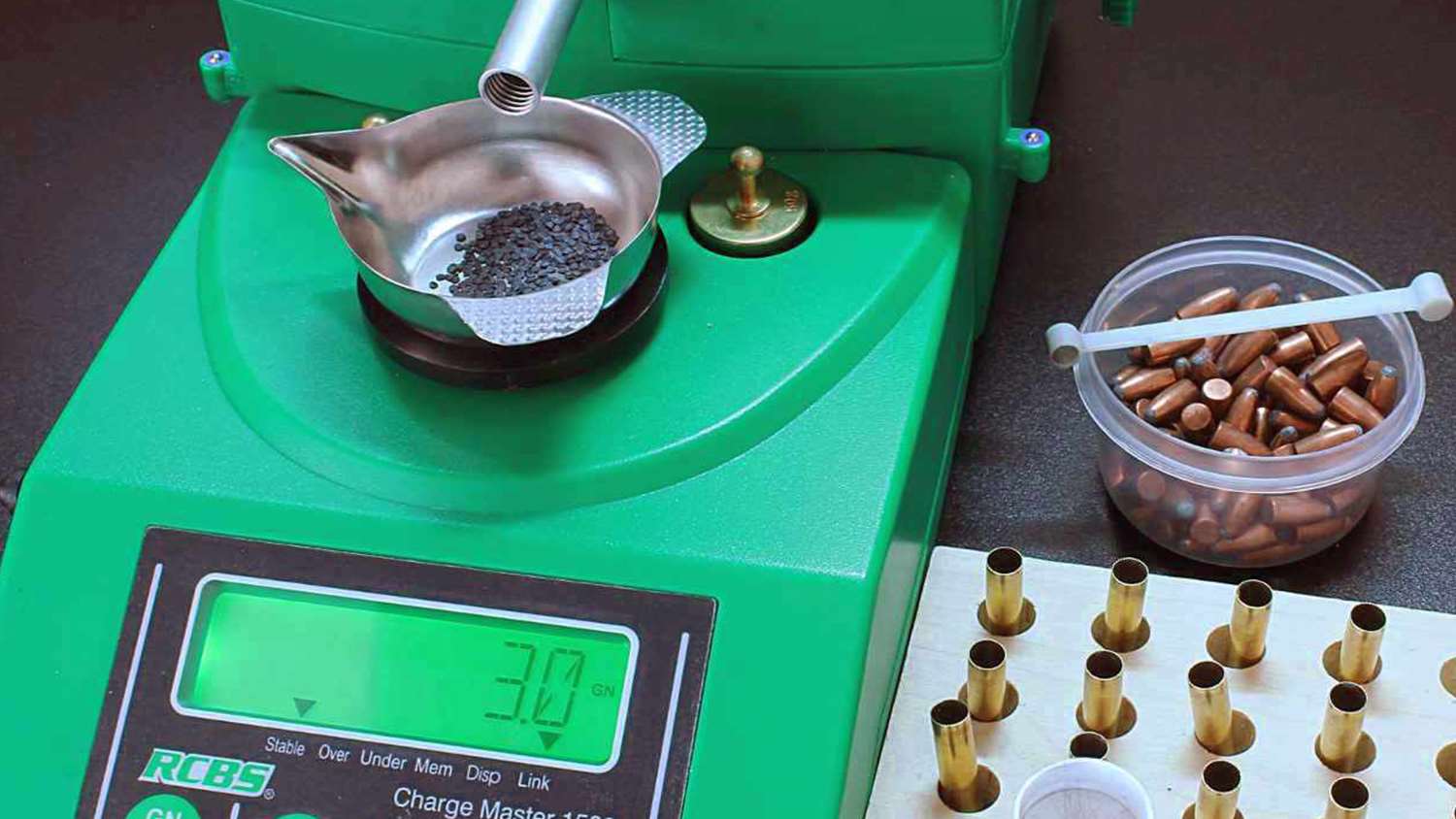
But the .22 WMR’s tiny 2- and 3-grain powder charges, combined with +/- 0.1 grain scale or scoop tolerances, creates a bit of a conundrum for precision reloading. It means a tiny 2-grain powder charge can vary by 10 percent between +0.1 grain and -0.1 grain cartridges that fall within that +/- 0.1 grain tolerance. A 10 percent difference in powder charges between cartridges is a lot, essentially two different loads. Such scale tolerances can be the limiting factor in the precision (accuracy) of such tiny handloads, though more load development testing bulkier powders might bring this disparity down.
Light bullets
I started load experiments with some inherited 40-grain .224-inch jacketed SP bullets of unknown make that I had on hand. But “unknown” doesn’t provide us with lasting knowledge, so after preliminaries with the mystery bullets I switched to some we can find on gun shop shelves―bullets possessing short ogives to make that 1.350-inches COL. Hornady V-MAX 35-grain .224-inch varmint bullets fill that bill.
No-stop crimping
The Sharp Shooter tong tool’s indispensable function is to serve as a bullet crimper. A recess in the tool cradles the case while a ridge machined near its upper edge serves to crimp the case onto the bullet when you squeeze the handles closed. The result is a kind of full circumference stab crimp. This operation must be done with the cartridge case and tool held horizontally to prevent the bullet from sliding backward into the case, and so that you can see precisely where to hold the cartridge mouth at the crimping ridge in the recess. A dot of marker ink on the tool face adjacent to that ridge can serve as a visual reference.
Brian Nixon at Sharp Shooter said that ridge is placed so that the tool can also be used to crimp bullets in .22 Winchester Automatic and .22 Winchester Rimfire cases; it might also work for the .22 Remington Automatic, though I have none of the latter to examine. But it also means that we cannot use the .22 WMR case rim as a stop when inserting it into the crimper, as that would crimp the case behind the bullet. Placing the crimp is therefore an “eyeball” operation. Nixon said Sharp Shooter will soon release a tool to hold the .22 WMR at the proper depth in the crimper.
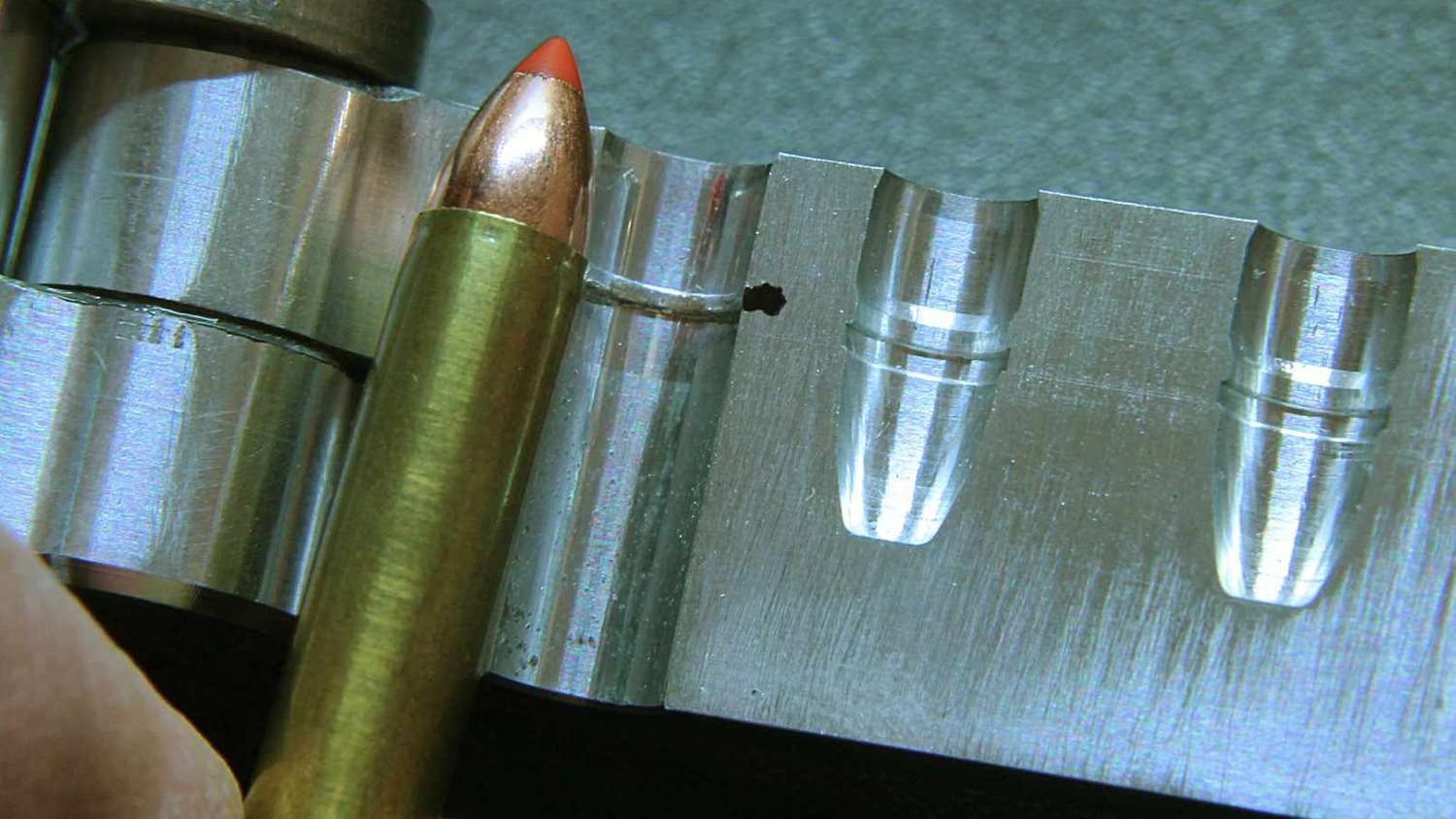
The crimping tool has no stop, and no adjustment to prevent crimping too tightly. A too-tight crimp deforms cases to the point that they will not chamber, so it’s a good idea to initially load a few unprimed, uncharged dummy cartridges to get a feel for the proper crimp. My tool pinches cases at the two points where the tool halves meet, raising a lip of brass; rotating the case 90 degrees and crimping a second time takes care of that problem.
Range works
At the range, I tested handloads in a Ruger Single Six and a Savage Model 93. Three grains of Unique launched the 35-grain Hornady bullets at an average of 1454 fps from the Savage into groups of roughly twice that of factory offerings at 25 yards, about 2 inches.
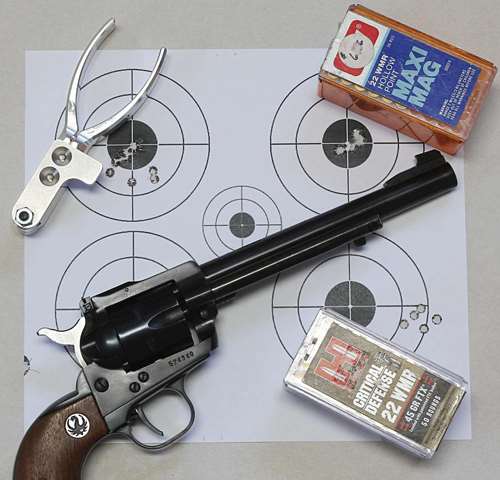
While not abysmal for a first-run load, about a third of the cartridges failed to fire in either gun. Obviously, I need to refine something in my priming technique, or perhaps use a bulkier powder that will compress with bullet seating and aid in keeping the Prime-All under the case rim.
The group sizes are a reflection of both scale tolerance permitting comparatively large differences in case-to-case tiny powder charges (as mentioned above), and of the necessarily inconsistent neck tension due to loading by “feel.” More experimenting will shrink groups.
The 22MAG Reloader works. It scores high in entertainment and educational value, and would be a valuable asset in a situation where factory ammo might be unobtainable. MSRP for the 22MAG kit is $90, Prime-All to load about 1,000 cases is $20 (no hazmat fee required) and the resizing die with shellholder is $65. Visit 22lrreloader.com for more information.













